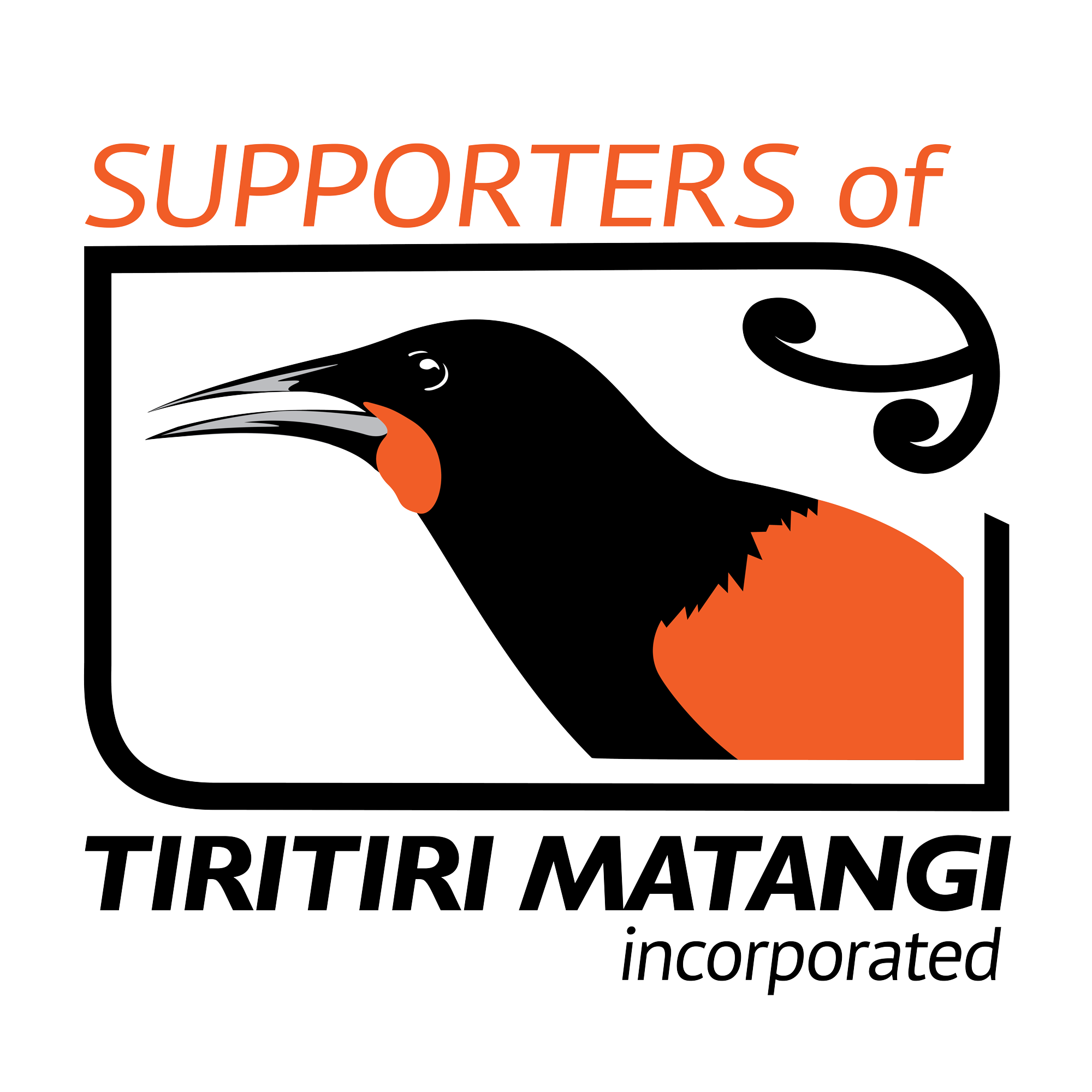Pests
Tiritiri Matangi was a prime location for a restoration project because it was relatively pest free. Cats, possums, Norway rats, ship rats and mustelids (stoats, weasels and ferrets) were never transported to the island. Indeed, since the 1800's only a couple of pests have established themselves on the island.
Pest monitoring
Keeping an open sanctuary predator free requires constant vigilance. Multiple lines of tracking tunnels are deployed on the island – around the coastline, as well as in places where people gather and might open their bags. A tracking tunnel is a rectangular plastic tube, which contains a special card with an ink pad in the middle. The ink pad is baited with peanut butter, so that any animal attracted into the tunnel for a taste of peanut butter leaves its footprints on the card.
Predator trapping is expensive, so regular checking of the tracking tunnel network allows DOC to monitor for unwanted species, and only activate traps if something is detected.
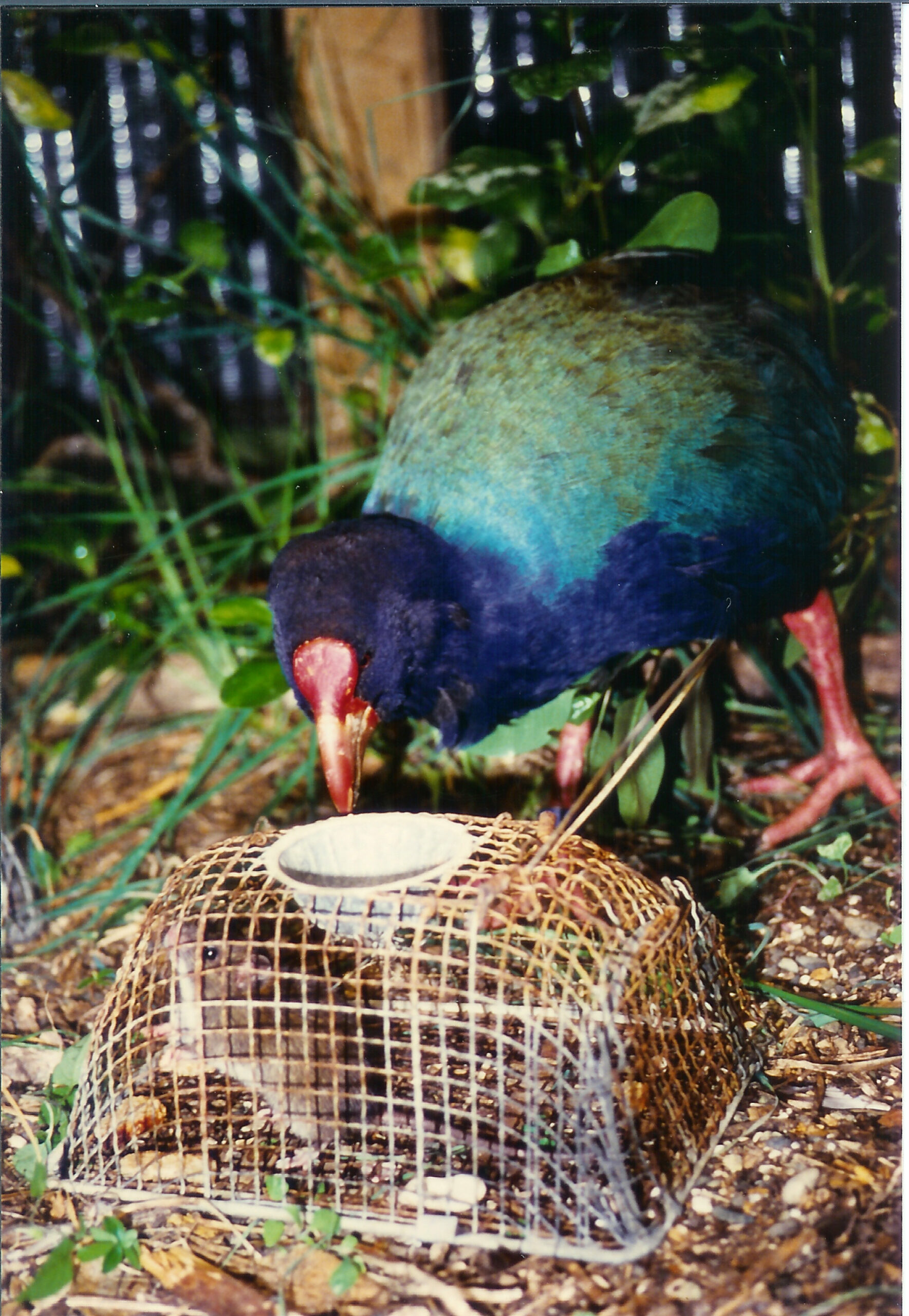
Caption: The takahe Mr Blue looks at a caged kiore. During educational displays in the 1980's and early 90's, ranger Ray Walter would release a kiore into crowds of children to send them running.
Kiore
At the time the restoration project was launched in 1984, there was only one pest on the island – the kiore. Once thought to be vegetarian, it was discovered that in fact these small Polynesian rats ate berries, eggs, chicks, frogs, insects and lizards. Records show that at certain times there was a population explosion, with 200 kiore per hectare, which no doubt had a devastating impact on the ecology.
After preparing a plan to help safeguard the island’s wildlife, a helicopter drop of anticoagulant brodifacoum was carried out in an effort to eradicate kiore. Ninety percent of pukeko were killed after the poison drop, and brown quail, blackbirds, sparrows and mynas were also decimated. However threatened species such as kiwi pukupuku/little spotted kiwi, tīeke/North Island saddleback and toutouwai/North Island robin populations were not detrimentally impacted. Following the poison drop, kākāriki and brown quail enjoyed a population boom, and plant species such as kohekohe and native broom flourished. The effectiveness of the kiore eradication on Tiritiri Matangi in 1993 led to eradication projects on larger islands, such as Kapiti in 1996 and Hauturu/Little Barrier Island in 2004.
The ongoing success of Tiritiri Matangi is dependent on the island remaining predator free, and so continual vigilance and education is required to ensure it keeps its pest-free status.
References:Anne Rimmer (2004) Tiritiri Matangi; Tandem Press, Auckland New Zealand http://www.gbict.co.nz/Newsletters/Issue7/Island Rat Eradications
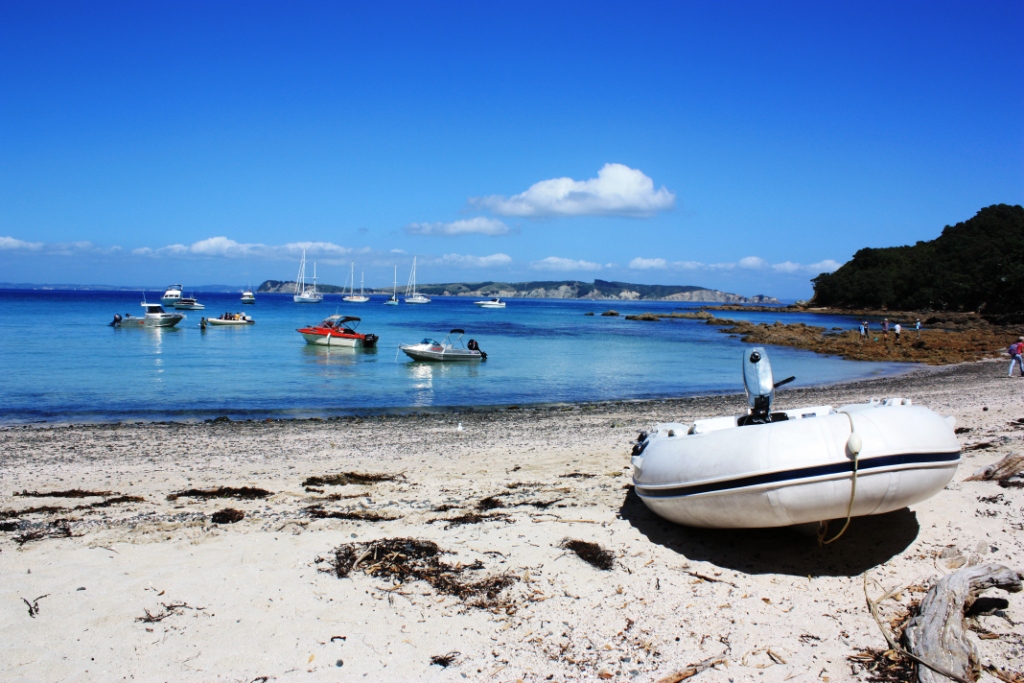
Argentine ant
The vigilance of Department of Conservation entomologist Chris Green led to the discovery of Argentine ants near the wharf in 2001. It is thought that this incredibly invasive species arrived on an infested dinghy.
Argentine ants eat a wide variety of foods, attack nesting birds and kill nestlings, and disrupt native ecosystems by displacing native ant species. They produce multiple queens and can form super-colonies that extend for thousands of kilometres.
An initial survey showed they were already well established, having created a number of nests near the wharf and North East Bay, so an eradication programme was launched. Another infestation occurred in 2008 around Hobbs Beach. The eradication of this emergent super-colony involved hand laying bait on a grid at two to three metre intervals, with the help of volunteers.
In 2016 eradication was achieved. This is the first time a total eradication of ants has been achieved in such a large area of New Zealand.
To prevent another outbreak of Argentine ants, we encourage visitors to check their gear for stowaways like the Argentine ant, as these pests can have a devastating impact on the island’s wildlife.
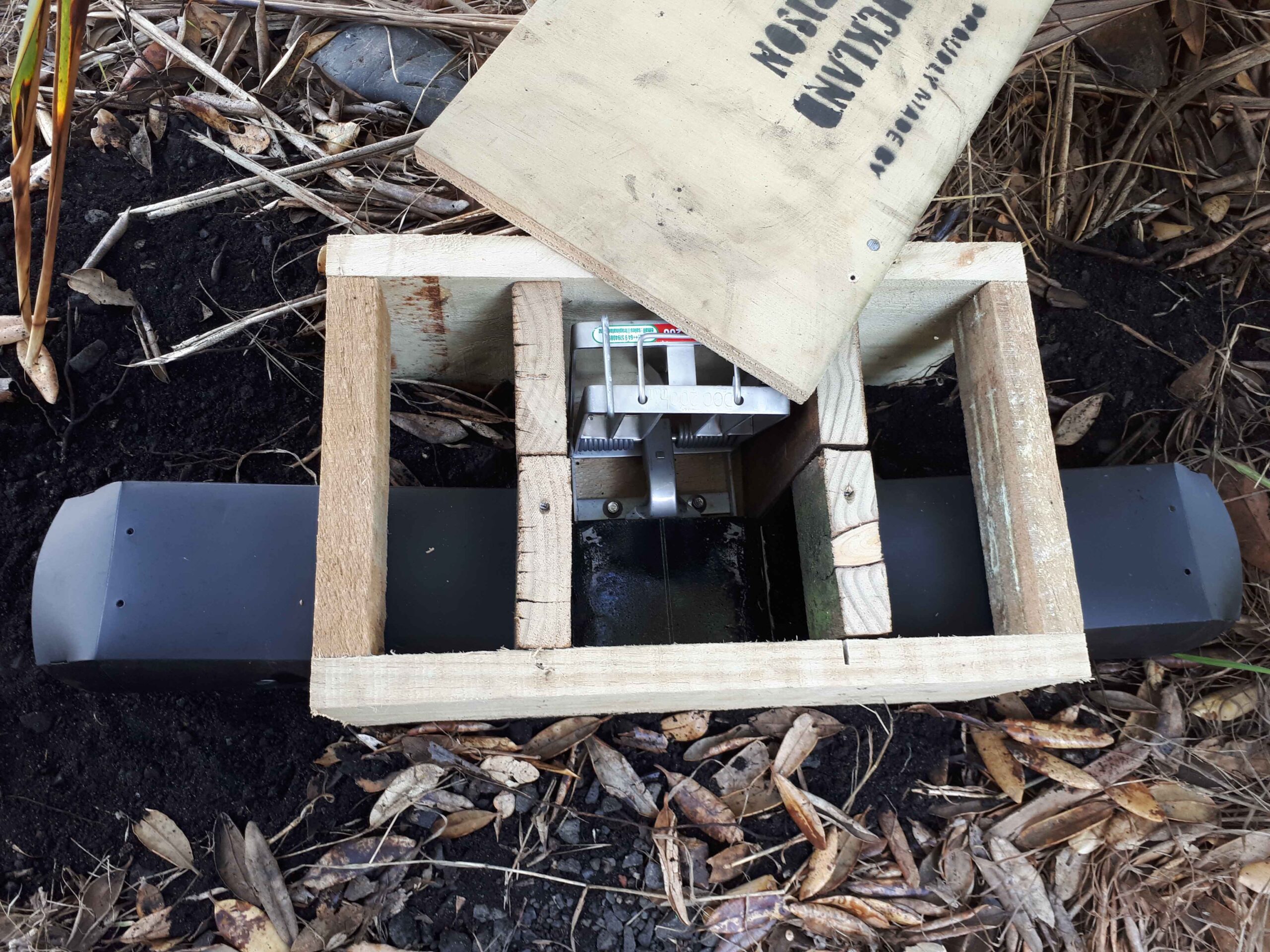
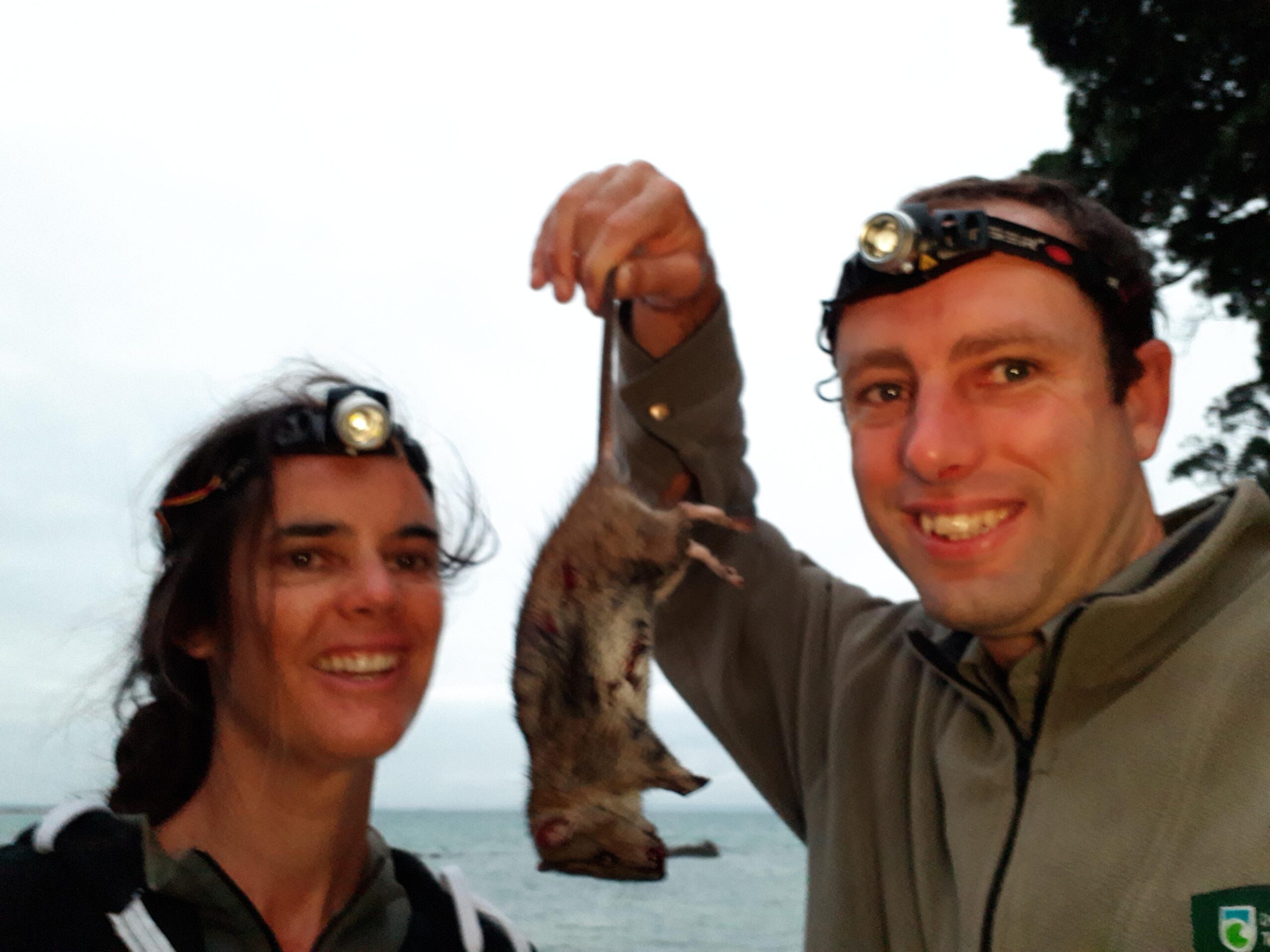
Norway rat
Following a big storm in January 2018, one of the volunteer pest monitoring team discovered rat footprints in two of the tracking tunnels near Hobbs Beach. The island’s DOC rangers were quickly alerted, and a specialist team travelled to the island to lead the response.
A network of traps was set up, but the wily rat wasn’t tempted to go in any of them. Monitoring from additional tracking tunnels, as well as footage from motion sensing night cameras, showed that the rat was roaming from one side of the island to the other. Given the willingness of the rat to use the tracking tunnels, the specialist team hit on the innovative idea of disguising the trap entrance to look like a tracking tunnel (see top photo). And a couple of days later the rat was finally caught!
The whole exercise took over three weeks, and cost around $40,000 to catch one rat. Fortunately the post-mortem results on the rat showed that while it was a female rat, it had never bred, so there were no offspring to be concerned about.
